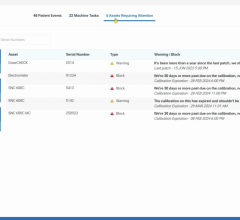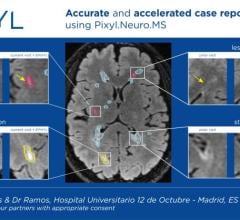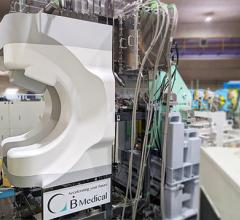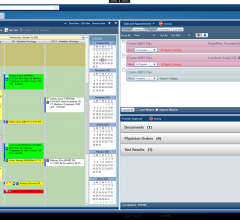
The LANTIS Oncology Information System by Siemens is a complete electronic medical record (EMR).
This year, more than 1.4 million Americans will be cancer patients, according to an American Cancer Society report. Unfortunately, with an aging U.S. population — approximately 17 percent of Americans are over the age of 60, according to the U.S. Census Bureau, and millions of Baby Boomers will turn 60 over the next decade — cancer rates won’t be declining anytime soon. While cancer treatments and prevention are leaps ahead from past decades, a more subtle, but important tool critical to oncologists has emerged over the past decade in the form of oncology information management systems (OIMS). OIMS are a critical component for radiation oncologists due to a variety of factors, not the least of which is their ability to manage vast amounts of data — data which is vital to treating cancer and improving patient outcomes.
Some experts feel the oncology community is just starting to fully comprehend the possibilities of integrating information systems across the broad spectrum of oncology practices. As the treatments of cancer have become more sophisticated, the need for oncology-specific information systems to keep pace has increased at a swift rate.
Why have a centralized repository?
According to clinicians who utilize various OIMS, the biggest advantage is having one central repository for all oncology data, yielding a streamlined workflow and improved efficiency. These efficiencies take different forms.
One vital component to any OIMS cited by clinicians is the ability to store, archive and have quick access to large amounts of images and other data. Clinicians say this is particularly important due to the prevalence of Image-Guided Radiation Therapy (IGRT), a high-precision radiotherapy that delivers higher radiation to the tumor while minimizing radiation around the tumor. IGRT requires a large volume of images to precisely plan each individual treatment.
Robert Desjardins, administrative director for the Image Guided Radiation Therapy clinic in Latham, NY, uses Varian Medical Systems’ ARIA, an information and image management system designed to aggregate patient data into a single oncology-specific medical chart.
“Since 90 to 95 percent of our volume is prostate cancer, we’re doing
cone-beam CT on all of our patients,” Desjardins said. “That data is saved into the vision server. At the end of every day, our physician, without having to go anywhere, can go into ARIA and review all the imaging for all of his patients.”
“With cone-beam CT, we’re doing thirty to thirty-five patients per day at about 400 megabytes, maybe 250 megabytes, per file, so that adds up extremely quickly,” he said.
David Nikolai, a business marketing manager with IMPAC Medical Systems, believes his company’s oncology-specific PACS — the MOSAIQ Oncology PACS — is best suited to handle imaging data.
“A typical [oncology department] stores several terabytes a year,” Nikolai said. “Radiology PACS don’t work for oncology workflow. In fact, we found that most PACS couldn’t effectively store and archive these RT objects that are generated by oncology. A lot of times you send those to a radiology PACS and try to retrieve them and they are stripped off because it doesn’t know how to deal with that RT extension of the DICOM standard.”
“You’re not having physicians, physicists or therapists running to specific PACS stations every time they want to see an image that was generated by a particular devise for a particular patient. You can pull up the patient record, click a button, and see all the images and treatment that are associated with that patient,” he said.
Inefficiencies that were once routine, according to one clinician, disappear with an OIMS.
“Our therapists are extremely happy because they don’t have to run around the department looking for a paper chart,” said Kelly Andreou, a dosimetrist with Christiana Care Health System Newark, DE. Christiana uses the LANTIS Oncology Information System by Siemens Medical Solutions. “For me as a dosimetrist, I feel like I can work on another patient’s plan per day [because of LANTIS]. I used to waste about an hour a day chasing a chart.”
A patient’s images and health records — including medical health history and general health information — are all factors needed by oncologists to plan radiation therapy treatments.
“A patient treatment history in radiotherapy consists of a complex sequence of information,” said Volker Steil, head of medical physics group, department of radiation oncology, University of Medical Centre Mannheim at the University of Heidelberg, in Heidelberg, Germany. “This information is based on images and alphanumeric information and is related to a defined treatment case. The therapist needs this information in structured patient-related design. Having this information on a central system is the most effective way of patient care.”
After the radiation oncologist sets the individualized treatment plan using the patient data from the OIMS, the dosimetrist calculates the radiation exposure with the approval of the radiation physicist. The plan is entered into the OIMS. That plan will then be pulled up at the treatment machine.
“If you’re working off one central database where everyone is accessing the exact same file, there is no chance for error,” Desjardins said. “That in itself is probably a reason to have an oncology-based system.”
The reported results from clinicians who use OIMS include more throughput, reduced time finding images and data and reduced department overtime. Time-consuming physician dictation has decreased an estimated 50-75 percent at his clinic, said Desjardins.
Clinicians and vendors have experienced some similar challenges in implementing OIMS, including a hesitancy from departments to completely depart from the use of paper, even if all documents are stored in an OIMS. Newer OIMS sometimes struggle to interface with other programs.
OIMS implementation
As with any system implementation affecting multiple parties, implement can be tricky and requires proper planning. Analyzing and evaluating the specific needs of the oncology department to streamline workflow is necessary before implementation of an OIMS can be realized. Both Desjardins and Frank Lohr, M.D., radiation oncologist at the University Medical Centre Mannheim, stress the need to build redundancies in the storage of oncology data, particularly if the department plans on going paperless and filmless.
As to whether a phased implementation of an OIMS is preferable or not, clinicians who have gone through the transition offer differing opinions. The University Medical Centre Mannheim made the switch to MOSAIQ Oncology PACS, including going paperless and filmless, in a step-by-step process. Desjardins recommends a full implementation of an OIMS if the situation allows, which is what the Image Guided Radiation Therapy clinic did in 2005.
“I think it just takes that upfront resolve to do it,” Desjardins said. “We were very fortunate. Our first day of business, we were treating six patients so we had the luxury of time.” <



 July 11, 2024
July 11, 2024 








